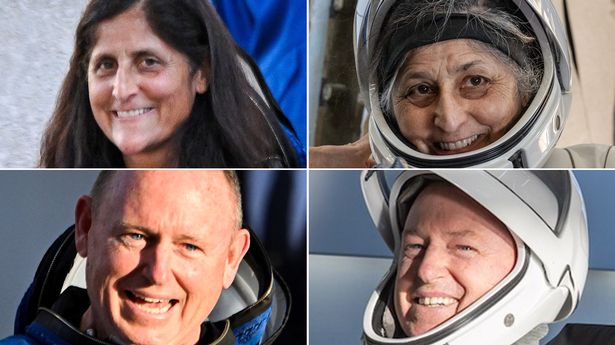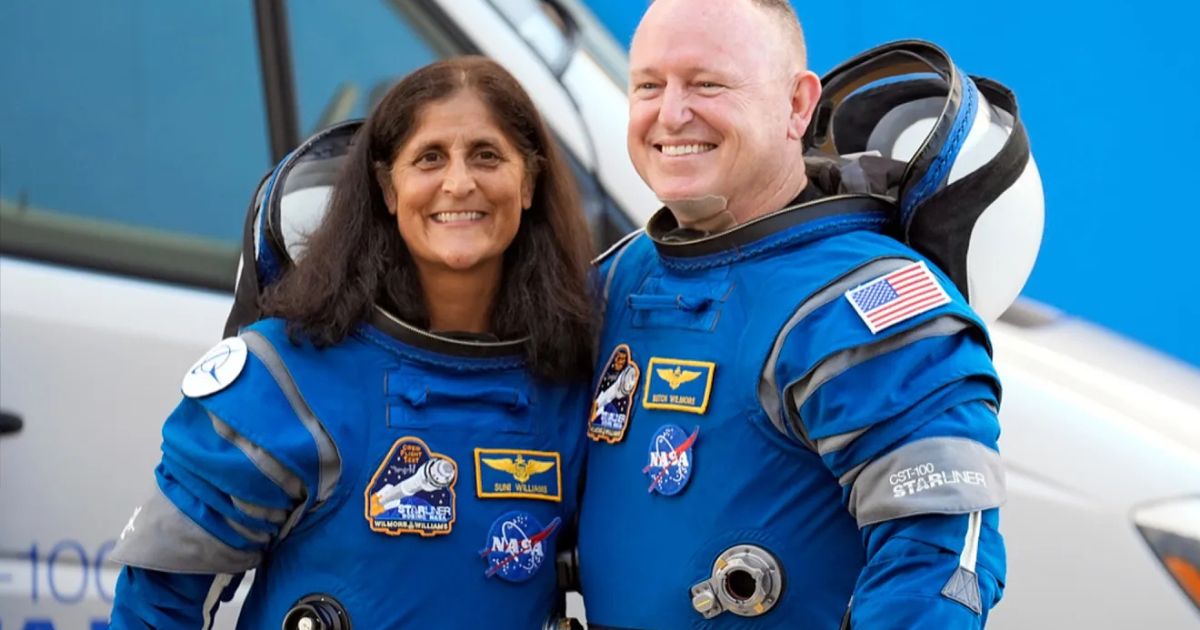After 286 days aboard the International Space Station (ISS), NASA astronauts Butch Wilmore and Suni Williams returned to Earth, showcasing dramatic physical changes that reveal the harsh effects of long-term space travel.
The duo landed in the Gulf of America on Tuesday via a SpaceX capsule, far exceeding their original mission timeline.
Upon arrival, Wilmore, 62, and Williams, 59, were carried on stretchers for medical checks, with side-by-side images showing them looking pale, gaunt, and noticeably aged due to microgravity’s toll.

NASA has long understood that extended spaceflight takes a heavy physical toll. Without Earth’s gravity, astronauts lose muscle mass and bone density while facing neurological shifts like disorientation and space motion sickness.
Radiation exposure beyond Earth’s magnetic field adds further risks, including cellular damage, higher cancer odds, and premature aging.
Research from the Baylor College of Medicine also points to issues like eye swelling, reduced blood volume, lower aerobic capacity, difficulty standing, and irregular heart rhythms. NASA continues studying these effects to enhance safety for future missions, especially as plans for Mars exploration grow.
Originally launched on June 5 aboard Boeing’s Starliner capsule for a week-long trip, technical delays stretched Wilmore and Williams’ stay to nearly 10 months.
During this time, they joined the ISS crew, conducting experiments, fixing equipment, and completing spacewalks.
Williams even set a record, logging 62 hours across nine spacewalks—the most by any female astronaut. Their mission yielded valuable health data, building on studies like the Twins Study with Scott Kelly and his brother Mark, as well as Christina Koch’s near-yearlong stint in space.
Despite the physical strain, both astronauts stayed resilient, drawing on their Navy captain backgrounds. Their extended absence impacted their families—Wilmore missed his daughters’ milestones, while Williams relied on the ISS internet to connect with loved ones.
The mission stats are impressive: 286 days in space, 4,576 orbits, and 121 million miles traveled. As NASA analyzes their return, Wilmore and Williams’ transformations underscore space’s harsh reality for humans, yet their efforts push us closer to safely exploring the cosmos.





